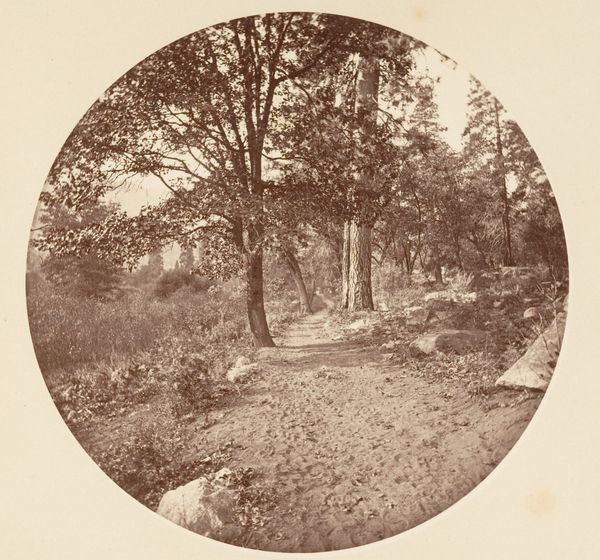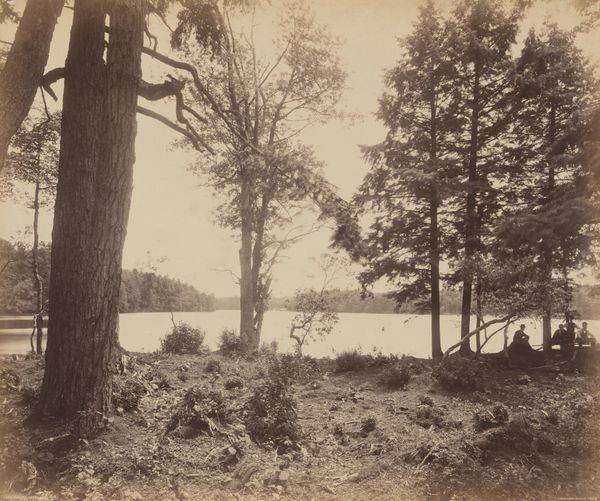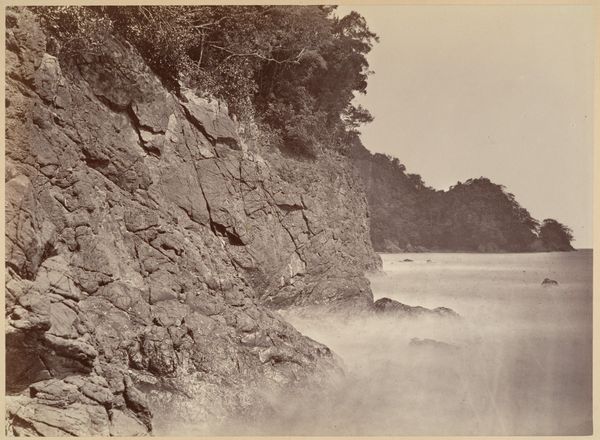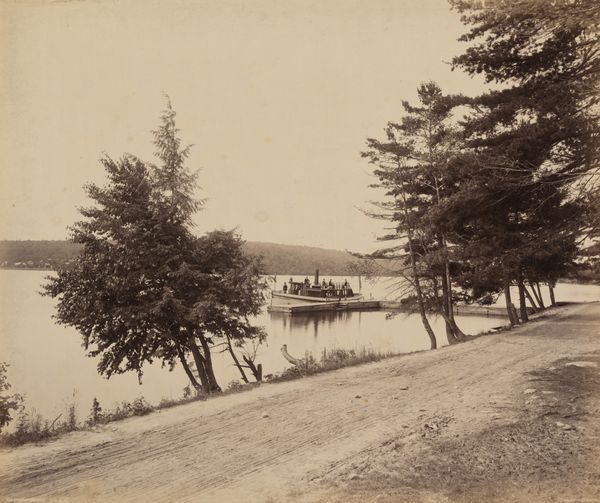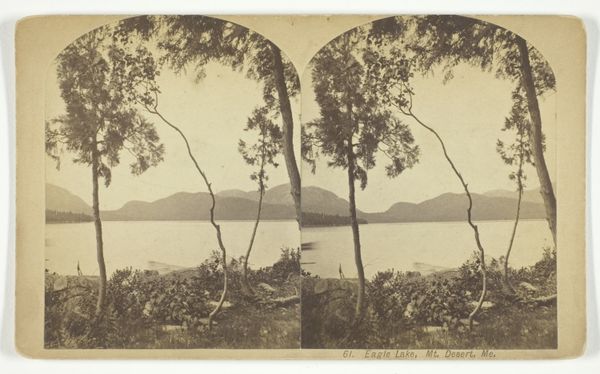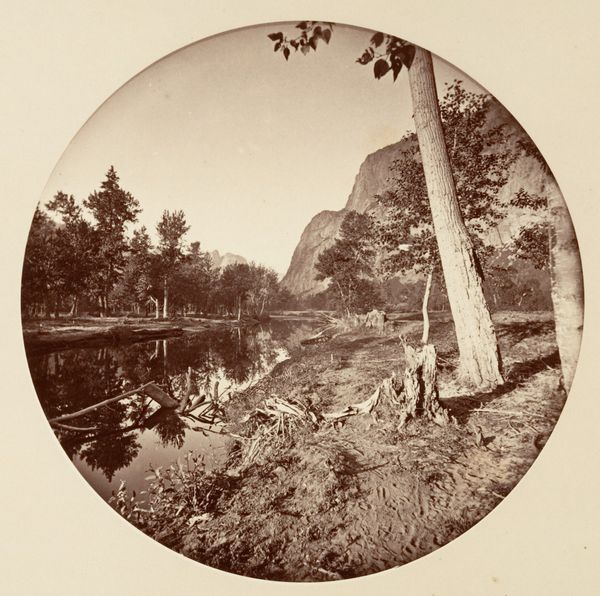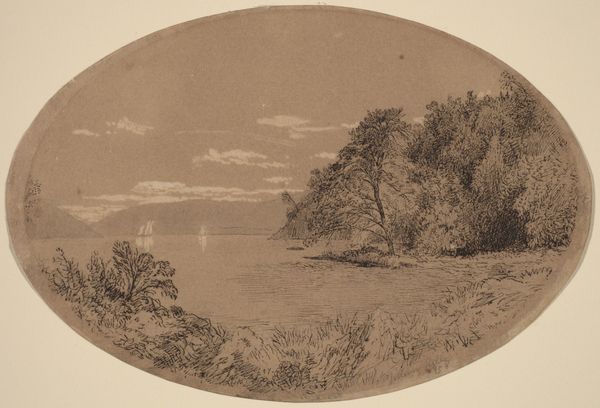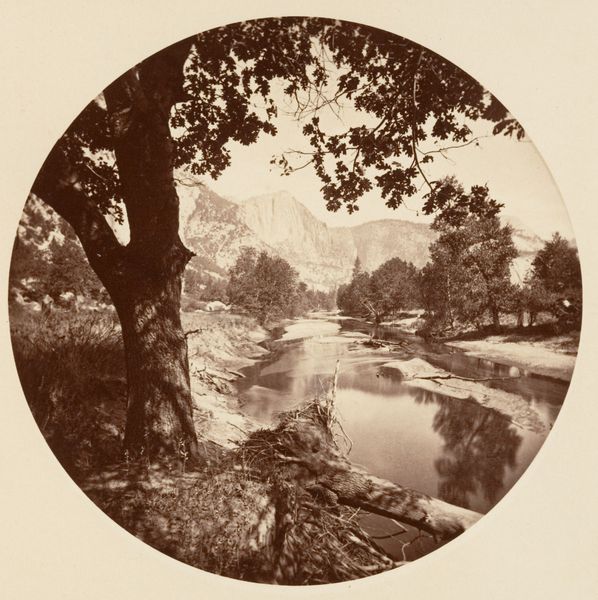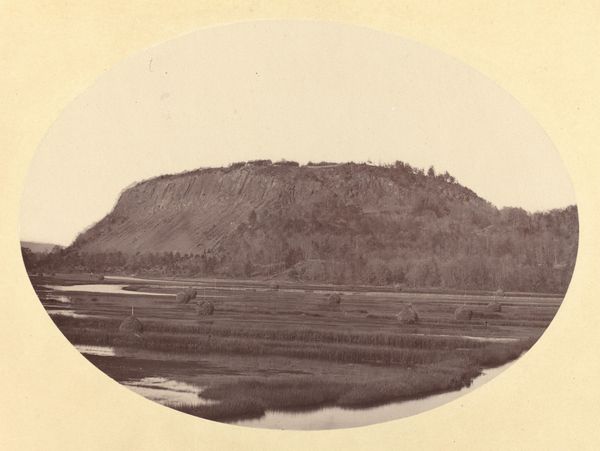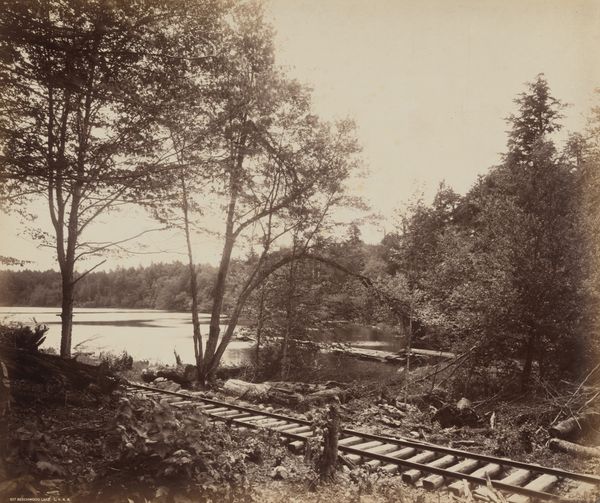
F.W. 4 (Old Chain Battery Walk), West Point, New York c. 1867 - 1868
0:00
0:00
photography, albumen-print
#
landscape
#
photography
#
hudson-river-school
#
watercolor
#
albumen-print
#
realism
Dimensions: image: 14.61 x 19.69 cm (5 3/4 x 7 3/4 in.) sheet: 14.61 x 19.69 cm (5 3/4 x 7 3/4 in.) mount: 25.4 x 33.5 cm (10 x 13 3/16 in.)
Copyright: National Gallery of Art: CC0 1.0
Editor: Here we have George K. Warren's albumen print, "F.W. 4 (Old Chain Battery Walk), West Point, New York," taken around 1867-1868. The monochromatic image, encased in an oval frame, depicts a path carved into the landscape, leading towards water and distant hills. What stands out to me is the steep, almost imposing rock face on the left – it gives the photograph a sense of dramatic perspective. What's your take on this piece? Curator: That's an excellent observation. The dramatic perspective does create an interesting dynamic, but let’s consider the historical context. This photograph was taken shortly after the Civil War. What impact did this national conflict have on photographic practices at the time, especially in how land was portrayed? Editor: Hmm, I suppose photography moved beyond just portraiture to documenting landscapes and maybe even national identity. The Civil War must have reshaped views of the nation. Curator: Exactly. Consider how images of landscape can construct narratives around territory, ownership, and even healing after conflict. Think about the idea of Manifest Destiny. West Point, as a military academy, represents the nation's strength and expansion. Could this idyllic, "untouched" landscape be subtly reinforcing a sense of national pride and a forward-looking vision, despite the recent trauma of war? Editor: So, the landscape isn't just a pretty view, but a loaded image projecting power and recovery? Curator: Precisely. And let's look at the shadows. They could signify a longing to recover from the shadows of the Civil War, hinting that with this walk toward the open view the shadows shorten. Editor: I never would have considered that perspective! It’s amazing how one image can hold so many layers. I see the photograph in a whole new light now. Curator: That’s the beauty of art. Dialogue helps us understand art’s relevance to our lives.
Comments
No comments
Be the first to comment and join the conversation on the ultimate creative platform.
